Earth
ID: 10970
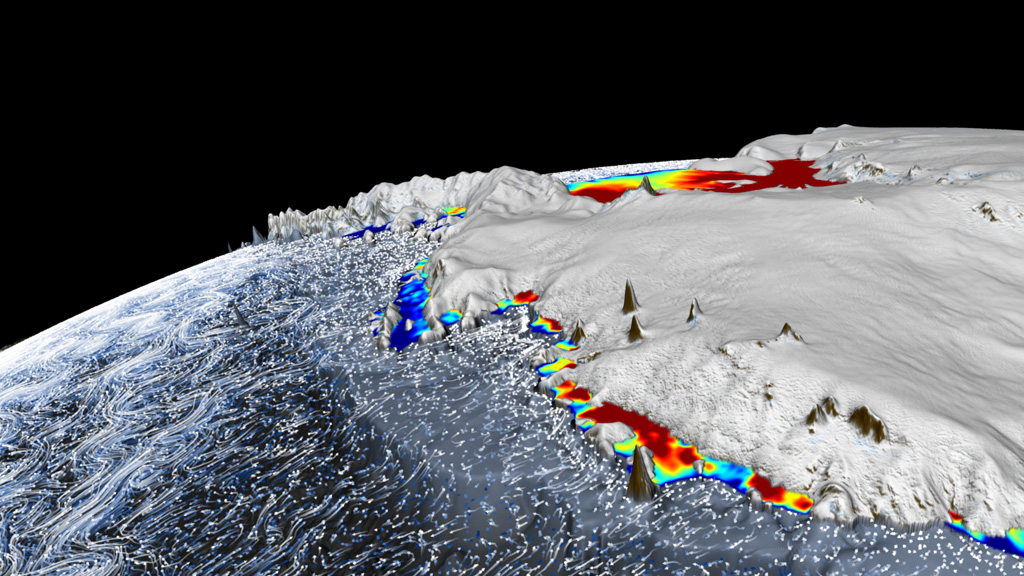
Warm ocean currents circulating off the coast of Antarctica are indirectly contributing to rising global sea levels. As these twisting flows meander around the continent's frozen edges and beneath the underside of floating ice shelves, they're slowly melting the ice from below. Using surface elevation measurements collected during NASA's ICESat mission, scientists have found that this melting is driving most of Antarctica's recent ice losses—particularly in West Antarctica, where inland glaciers that feed into the ice shelves are draining ice into the ocean at an accelerated rate. The visualization below shows the interaction of modeled ocean currents and Antarctic ice shelves, where red areas represent ice thicker than about 1,800 feet and blue areas represent ice thinner than about 650 feet. Notice how the ice shelves generally become thinner—a rainbow of colors indicates intermediate thicknesses—as they extend farther from land.
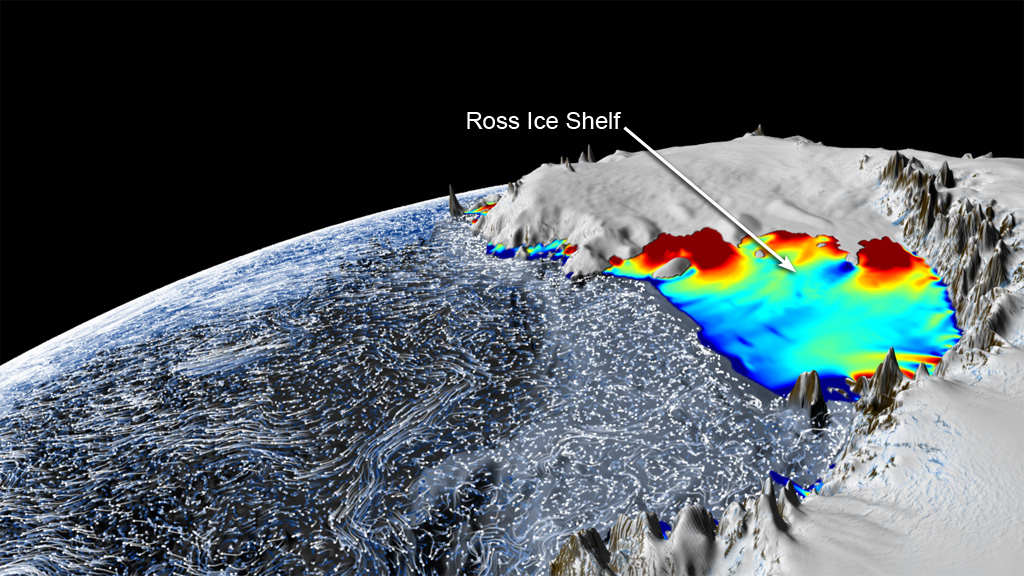
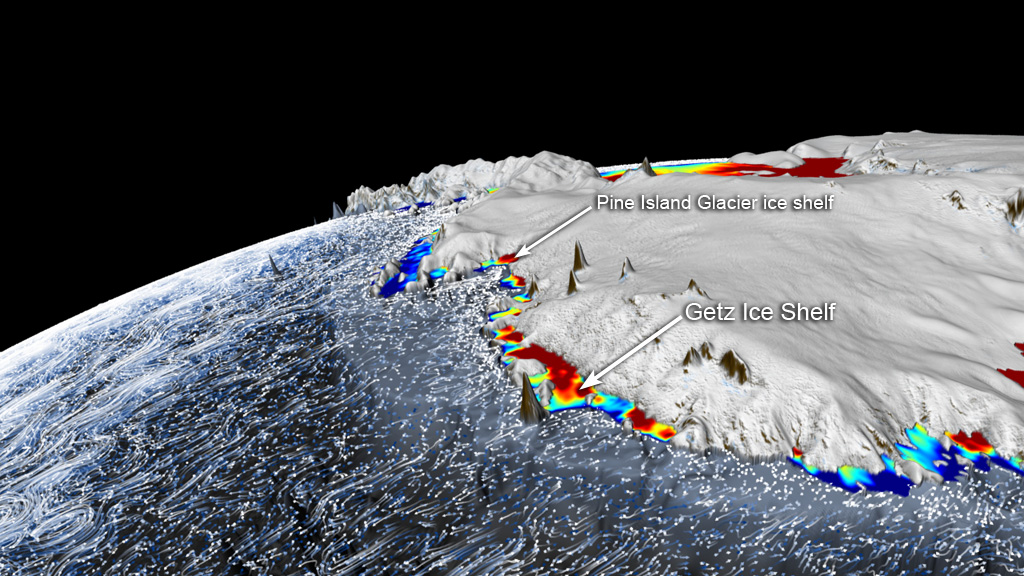
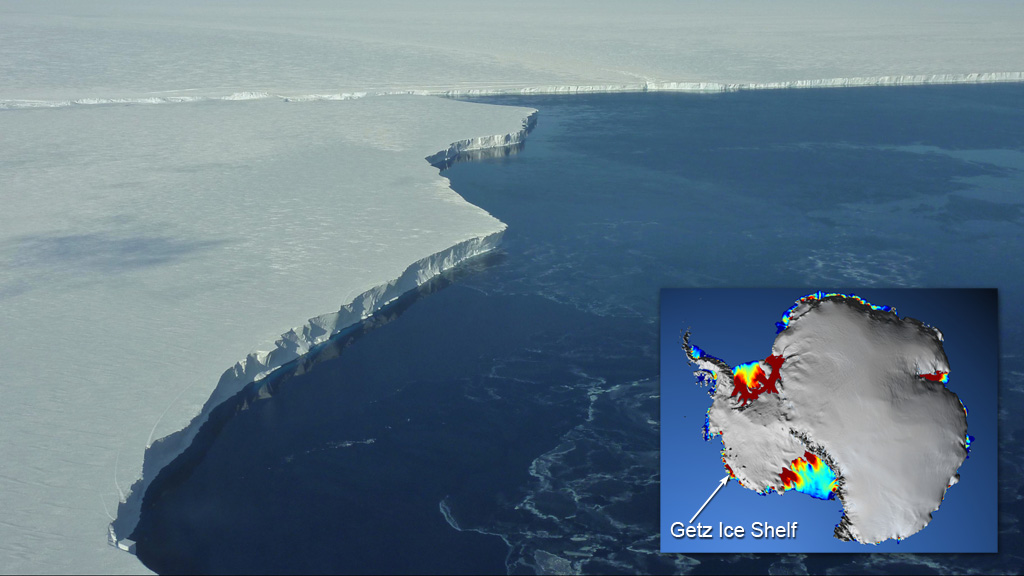
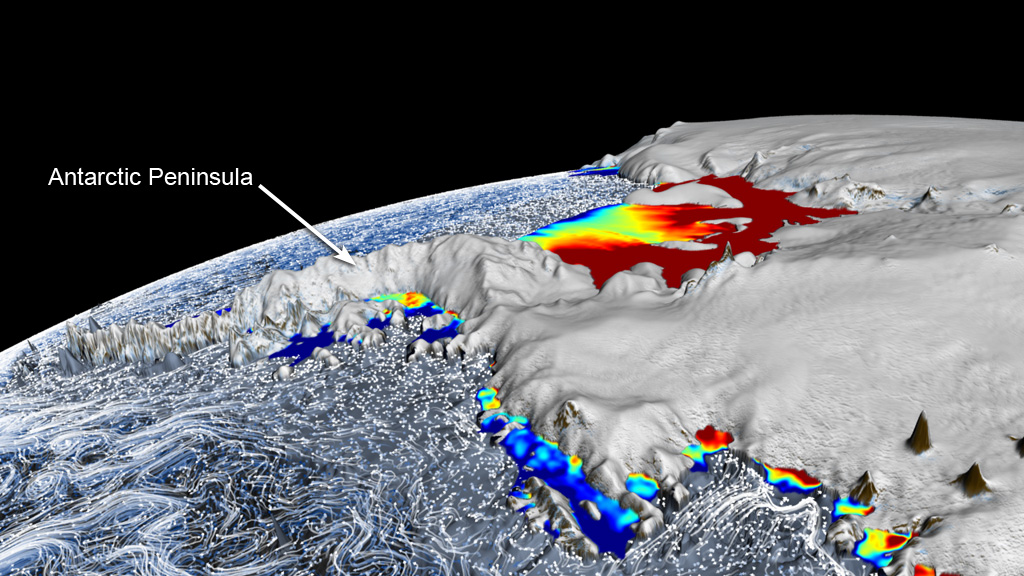
Currents Of Change





Related Story
For More Information
Story Credits
Visualizers/Animators:
Trent L. Schindler (USRA)
Horace Mitchell (NASA/GSFC)
Greg Shirah (NASA/GSFC)
Producer:
Patrick Lynch (Wyle Information Systems)
Lead Writer:
Kathryn Hansen (Wyle Information Systems)
Trent L. Schindler (USRA)
Horace Mitchell (NASA/GSFC)
Greg Shirah (NASA/GSFC)
Producer:
Patrick Lynch (Wyle Information Systems)
Lead Writer:
Kathryn Hansen (Wyle Information Systems)
Please give credit for this item to:
NASA's Goddard Space Flight Center
NASA's Goddard Space Flight Center
Short URL to share this page:
https://svs.gsfc.nasa.gov/10970
Keywords:
SVS >> App
NASA Science >> Earth
https://svs.gsfc.nasa.gov/10970
Keywords:
SVS >> App
NASA Science >> Earth








